Table of Contents
One of the essential tools that any industry requires is a signal generator.
If you’re wondering why we think it is crucial to the reason behind it, it can help in the testing unit under test about system supplying stimulus.
So if you are not familiar with this tool, then read out the whole blog to know more about it:
What is a Signal Generator?
"A signal generator is a device that generates signals in a laboratory environment. It can troubleshoot or test electronic devices to create a repeating or non-repeating electronic alert."
Electronic test equipment produces signals for other instruments, such as oscilloscopes, spectrum analyzers, and waveform generators.
Generators may make sine waves, square waves, triangle waves, or pulses, and these waveforms may be simple or highly complex.
The output from a Signal Generator is generally helpful for anything from testing the frequency response of an amplifier to calibrating scientific equipment and adjusting radio transmitters.
A signal generator can test various circuit components and check their performance under different conditions. Aircraft, radars, cell phones use signal generators to test their performance.
What is Signal Generators Used For?
Signal generators cover a broad range of frequencies and are commonly responsible for checking the response of electronic circuits or devices, such as amplifiers, loudspeakers, and antennas.
These are also helpful in testing and measuring purposes in a laboratory environment, testing equipment under controlled conditions, and generating signals for use by other devices.
The primary function of the signal generator uses generate test signals that are valuable devices in the design, development, installation, and maintenance of electronic equipment.
Types of Signal Generators and their Application:
With technology, signal generators have evolved. Let you know more about signal generator applications and the types of signal generators here:
1. Standard Signal Generators:
“Standard signal generators are one of the most typical classifications of signal generators that help produce repetitive and non-repetitive waveforms across different shapes and amplitudes.”
These standard signal generators generate repeating and continuous analog signals with various frequencies, such as audio and radiofrequency and can devise numerous and dissimilar waveforms of a typical type (sine waves) and frequency.
The most common applications for these signal generators are electronics testing, RF and microwave measurements, laboratory experiments, and education.
Read also: Delta Modulation & Demodulation: Theory & Applications
2. Arbitrary Waveform Generators:
Arbitrary waveform generators help create sophisticated waveforms that a user can specify as per requirement. These generators can form a waveform in any shape, and also help enter in various ways, extending the specifying points of any given waveform.
But these signal generators are more complex than standard signal generators and expensive.
Arbitrary waveform generators come with exceptions in terms of low bandwidth levels and also limited frequency range.
3. Radio Frequency (RF) Signal Generators:
A radio frequency (RF) signal generator is an electronic device that generates electromagnetic signals in the RF (radio frequency) portion of the spectrum.
RF signal generators are helpful in terms of testing and troubleshooting purposes, especially in the development stages of consumer electronics devices, such as mobile phones.
RF signal generators have two primary uses:
- Generating a carrier signal for electronics testing and
- Calibration of a source of modulated RF signals for electronic component failure analysis.
RF signal generators produce sinusoidal and pulse-modulated RF signals with an arbitrary waveform and modulation. It makes RF signal generators a valuable tool for testing many devices, including wireless receivers from cell phones to Wi-Fi receivers.
4. Function Generators:
Function generators are electronic devices that generate repetitive non-sinusoidal waveforms. They are commonly used to create test signals for measuring and adjusting electronic equipment.
The voltage relationships between consecutive points in the output waveform can be linear or logarithmic, depending on settings chosen by the operator.
The function generator’s output can deviate the frequency and amplitude, which is helpful for classroom demonstrations and laboratory testing.
Function generators are typically used in electronics to generate various waveforms; they are also beneficial in acoustics, seismology, and geophysics applications.
5. Special Purpose Signal Generators:
Apart from the regular signal generator, different signals are helpful for particular purposes. Some of the special purpose signal generators are:
5.1 Pulse Generators:
A pulse generator is a compact electronic device that generates voltage, current, or power pulses. Pulse generators are valuable in testing and measurement instruments and industrial control applications such as switching appliances on and off under program control.
Pulse Generators are sound in industrial, scientific, and medical areas to provide a clean and precise source of electronic pulses.
Pulse generators use a clock signal or some other source of periodic timing to generate a train of identical pulses.
These pulses occur by an external event, such as pressing a button or turning on a light switch. These devices are helpful in medical equipment to measure heart rates and other vital functions.
5.2 Video Signal Generators:
A video signal generator is a piece of test equipment used to produce a variety of signals.
These signals help measure the quality and performance of various devices in the video chain, including flat panel displays and TV sets.
The main types of video signals generated are composite and component; other types include S-video, RGBHV, Y/C (S-Video), and HDTV. These generators are of utmost importance for troubleshooting purposes and process control.
Read also: What is Soldering and Desoldering Rework Station?
5.3 Digital Pattern Generators:
Digital Pattern Generators render digital electronics stimuli. It is an electrical waveform equivalent to a sine wave. In terms of replicating any function, it does so by repeating the position of a voltage signal.
These generators come in addons unit and stand-alone and are helpful in embedded system debiting DPS hardware stimulation and DAC stimulation and also produces voltage levels compatible with different digital systems such as LVCMOS, LVDS, and TTL.
5.4 Signal Generator Software:
Apart from the hardware-based signal generator, there is also a signal generator for software.
Signal generator software facilitates the production of arbitrary waveforms with the aid of the output appliances.
A signal generator software is an application that makes various kinds of signals. It is helpful in testing and troubleshooting audio, video, RF, and any variety of devices related to signal to process.
It computes the signal parameters, including frequency and amplitude.
5.5 Vector Signal Generators:
Vector signal generator is a device that generates two or more signals with a specific phase relationship or two or more signals whose relative amplitudes that controlled in such a way as to be related.
Signals produced by these generators are usually sinusoidal waves of different frequencies, but they may generate other functions such as square waves and arbitrary non-sinusoidal shapes.
It can cause a time-varying voltage or current whose magnitude and phase the user can control. Such devices have multiple outputs, typically of different frequencies.
5.6 Video Signal Generators:
Video signal generators are helpful in creating high-quality video signals. They are mainly valuable for the testing and calibration of video monitors and display systems.
These are also helpful for adjusting audio equipment, testing picture quality, etc.
A video signal generator is generally an analog device that produces a waveform that can vary to simulate different video signals.
It enables generation timing and synchronization signals necessary for video equipment operation. These signals can modify to support various testing requirements of the video circuitry in a TV or a monitor.
5.7 Audio Signal Generators:
Audio signal generators are electronic devices that create test signals to test and measure audio equipment, electronics troubleshooting, and calibration.
Audio signal generators provide a wide selection of complex waveforms, allowing the user to simulate nearly any real-life scenario. It helps calibrate or demonstrate the capabilities of audio components like speakers, amplifiers, or headphones.
5.8 Microwave Signal Generators:
A microwave signal generator is an electronic device that generates signals in the microwave band of frequencies. Such devices are helpful in the research of communication systems, radar systems, and other similar applications.
A microwave signal generator is valuable in generating a wide range of standard or custom waveforms, including sine waves, square waves, triangular waves, pulses, and arbitrary waveforms.
These signal generators have a varied range of applications, including the design and manufacturing of electronic equipment and the production of radio-frequency test equipment.
5.9 Portable Signal Generators:
Fluke signal generators are handheld tools used for testing and calibrating electronic devices.
A portable signal generator is a battery-powered device plugged into an AC outlet. It is a unique piece of electronic equipment that produces sine, square, and triangle waveforms.
It is also an excellent medium of testing and troubleshooting, training students in electronics courses, or conducting electrical engineering experiments. They help test electronic devices’ frequency response and measure their characteristics under various distortion conditions.
The essential components of a handheld signal generator include an oscillator, amplifier, frequency counter, and power supply. They often provide a stable signal source for testing and troubleshooting RF equipment in the field. It is handheld to generate signals like sine waves, square waves, etc., testing any device or system.
Signal Generator Circuit:
Signal generator circuits use a signal tracing technique to check whether any electronic circuit has a failure part. It is commonly helpful in troubleshooting any audio and video electronic device.
This method uses a signal at one end and the response by adding a source to check the remaining reaction at the end. It has two inputs (f1 and f2) for controlling the frequency of one signal concerning another.
The main switch (S1) can control power to the circuit, and the potentiometer controls the output level of the course. The device works perfectly fine if the signal transfers between the two segments or ends.
Signal Generator Block Diagram:
Image Credit: circuitglobe.com
Signal Generator Price:
The signal generators come in different forms and have different types. Today these signal generators are available online, and one can easily buy any signal generator as per the requirement.
If we mention the cost of this device, then it depends upon its application and the type of signal generator that the customer requires. According to the type of signal generator you want to purchase, it can cost around $132 to $5290 depending upon the application and features that the device offers.
So you can go through the internet and select the one that your workspace requires by choosing the one with the right parts and budget.
Read also: 8085 Microprocessor Kit: Classification and Uses
Signal Generator In Multisim:
Signal Generator in Multisim has powerful analysis tools including AC/DC, transient, noise/spectrum, impedance, harmonic balance, and DC sweep with built-in waveform generators for testing linearity and stability.
It is software to quickly simulate, analyze, and prototype new electronics concepts. It helps in simulation to promptly understand the behavior of analog, digital, or mixed-signal systems. It reduces PCB layout tasks by using built-in 3D placement tools and pre-designed components.
Signal Generator Using Op-Amp:
In a Signal generator, an amplifier is a linear electronic circuit that can increase the power of a signal. It has four main elements: input, output, and two terminals for input and output. The input terminal is connected to an ac voltage source or another amplifier, while the output terminal connects to some load.
When the information ends in the initial op-amp, it will behave as a comparator. The output at the positive terminal will be one, and that at the negative terminal will be 0. The outcome of the integrator connects to one terminal of a potentiometer (2-terminal variable resistor), which controls the frequency.
The other terminal of the potentiometer connects to the ground, and the wiper (output terminal) is connected to the non-inverting input of an op-amp, functioning as an amplifier.
Tesca Global’s Signal Generators:
A beginner or an experienced individual in the technological world has the same dilemma, i.e., searching for the right tools or devices is always constant. If you are looking for the best signal generators, Tesca Global is all for you.
Tesca Global offers a wide range of Signal Generators for all your testing needs. These advanced test instruments help us evaluate the best features and quality signals. Tesca Global offers a varied range of products such as:
- Colour Pattern Generator,
- Pulse Generator,
- Tesca Global’s Arbitrary Waveform / Function / Signal Generator ( AWG )
- Tesca Global’s Arbitrary Wave Function Generator: 150 MHz,4″ Coloured LCD, USB + Software, Digital Function Generator, etc., are known for helping in different applications.
Whether you are in the process of designing, testing, or repairing equipment and components, the signal generators provide you with advanced features to deliver precise and high-quality results.
So choose the right one for you from Tesca Global to ease up the whole working process.
FAQs:
What Is A Signal Generator Used For?
Signal generators are helpful in testing and measuring the characteristics of analog and digital circuits and devices.
They are also used to produce signals for testing and measurement and some types of radio stations, television stations, radar equipment, sonar systems, seismographs, and audio systems. The essential function of the generator is to produce a known reference signal for comparison, calibration, or testing purposes.
How Does A Signal Generator Work?
A signal generator is a helpful tool for testing, measurement, and other applications. A signal generator is a device that outputs a standardized electronic signal with specific properties. The frequency and amplitude of the movement are usually adjustable, and the output can be a sine wave, square wave, triangular wave, pulse train, depending on the application.
One can set this device to produce periodic pulses, including pulses with controlled rise and fall times.
What are the differences between Signal Generators and Function Generators?
Some of the significant differences between a Signal generator and a Function generator are:
A function generator is a piece of test equipment that generates sine, square, and triangle waveforms of specific frequencies (Hz) to perform various tests on electronic circuits. A signal generator is an electronic device that provides continuous-time or discrete-time output signals, typically either complex (containing multiple sinusoidal components) or sampled from real-world signals such as speech, music, other sounds, or even images.
Signal generators are sound in electronics, computers, and telecommunications to generate precise, repetitive signals, usually from a few Hz to 10s of GHz. A function generator is a device that can be programmed to produce many different types of waveforms. It creates specific waveforms and performs tests such as measuring voltages or currents.



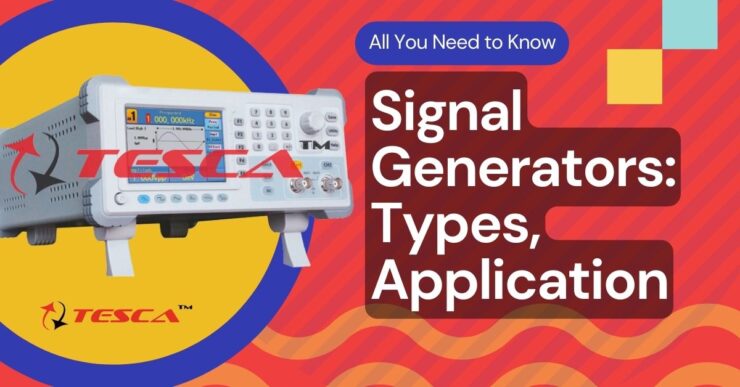
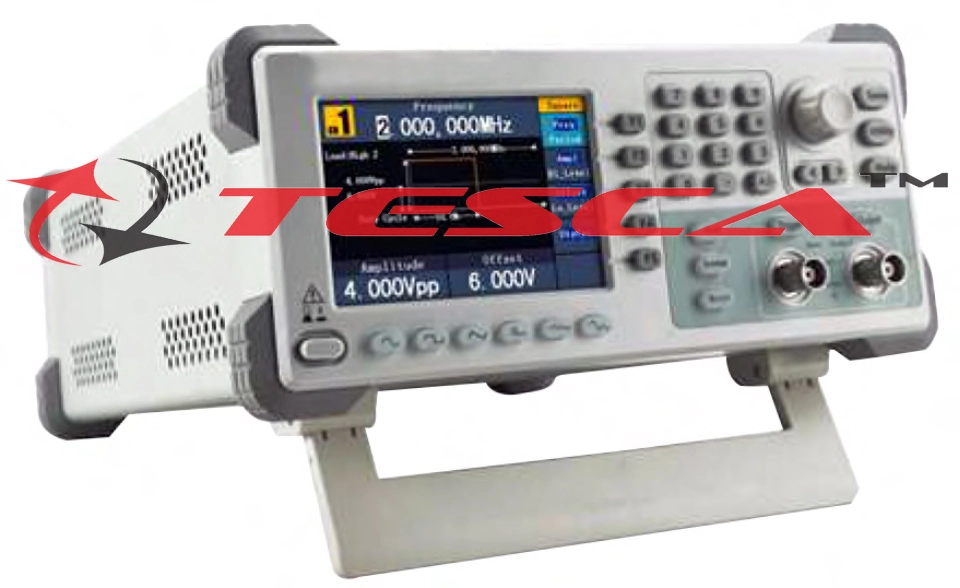
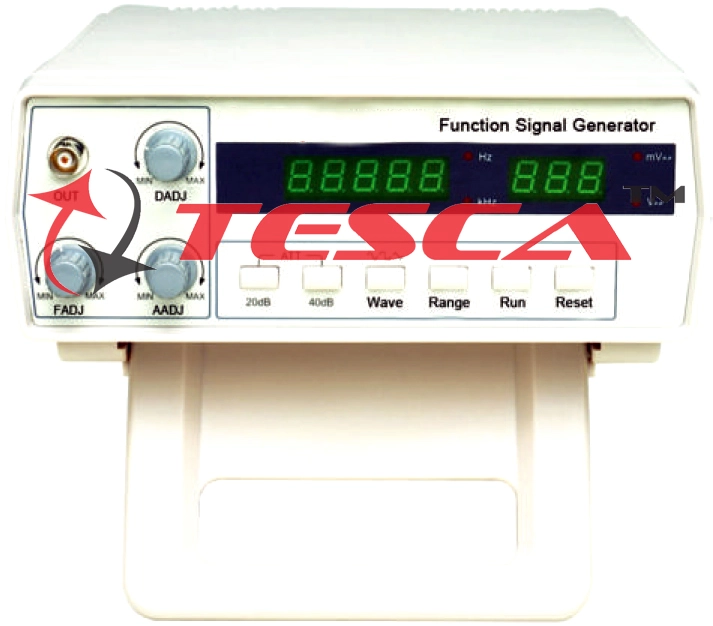
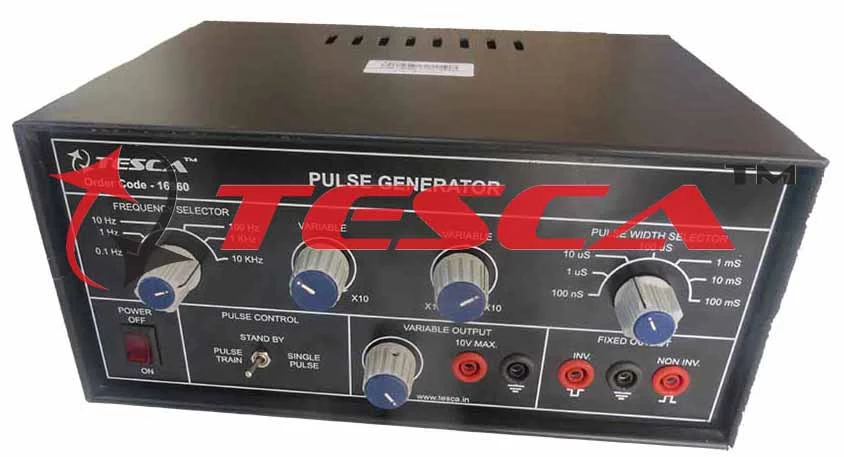
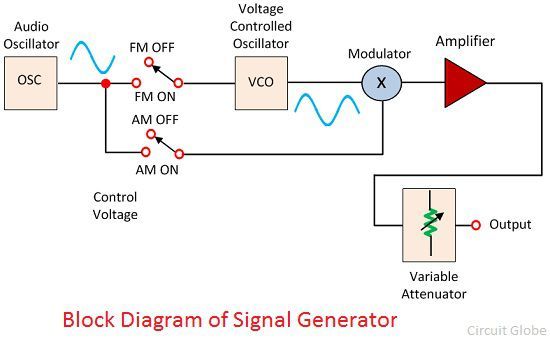
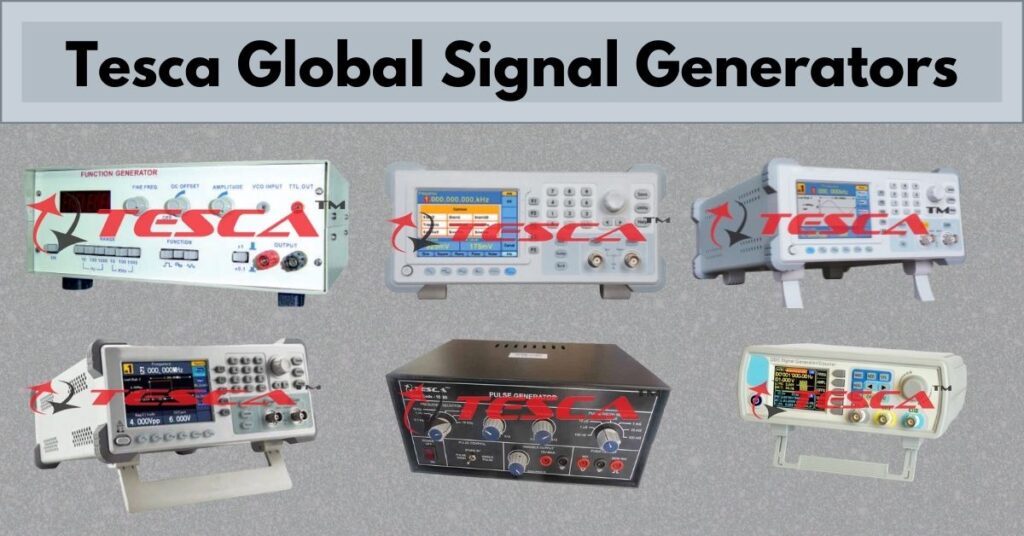

Add comment